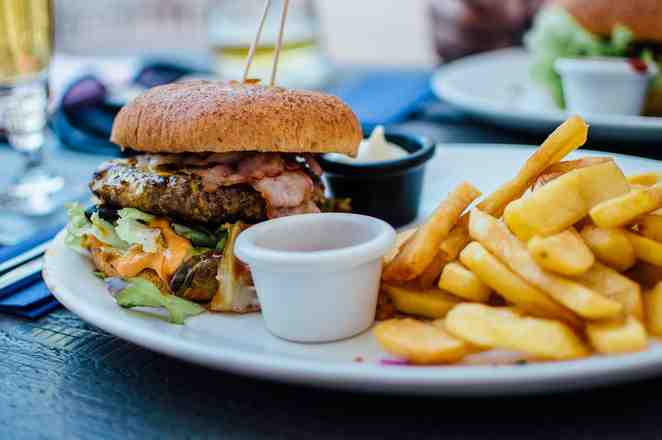
The Story on Fat
Low fat, high fat, good fats, bad fats … we are overloaded everyday with information about fat. Fat is an essential element to our diet, we require certain amounts to keep us healthy.
Fat has insulating properties; it protects our organs, makes food palatable and certain types of fat are linked to heart health.
However too much fat can be a problem for both your heart and your waistline.
Fats in food are made up of four types of fatty acids - monounsaturated, polyunsaturated, saturated and trans.
| Types of Fat | Food Sources |
|---|---|
| Healthy Fats | |
| Monounsaturated | Olive, canola and peanut oils, non-hydrogenated margarines, nuts, seeds and avocados |
Polyunsaturated
|
|
| Unhealthy Fats | |
| Saturated | Fatty meats, full-fat milk products, butter, lard, coconut and palm oil, hydrogenated vegetable oil and fast foods |
| Trans Fat | All foods with shortening or partially hydrogenated vegetable oil and many packaged foods |
Fat: How low should you go?
An appropriate amount of fat in the diet is less than 30% of your daily calories from fat.
- For women this equals about 65 grams of fat per day
- For men it is about 90 grams daily
Keep this number in mind when you consider stopping for a fast food burger. Most burgers contain 20-30 grams of fat and that is without the fries!
Tips for including the best types of fat in your diet
- Cook with olive oil instead of butter
- Add nuts or seeds to salads instead of croutons or real bacon
- Use olive oil and balsamic vinegar on salads instead of rich, creamy dressings
- Prepare fish such as salmon or mackerel instead of meat 2 times per week
- Add slices of avocado to your sandwich instead of cheese
- Limit the amount of processed foods in your diet. Snack on cut up fruit or veggies or a small handful of nuts
Common Misconceptions about Fats
It’s a healthy fat so I can use as much as I want.
Fat is still fat. Although choosing a healthy fat is important for heart health, the calories in fat still add up. Fat is the most energy dense macronutrient; it contains 9 calories per gram.
Protein and carbohydrate only contain 4 calories per gram. You need to stay within the recommendations outlined earlier and make most of your choices from the healthy fat list.
Cheese is ok; it is a great source of calcium.
Regular cheese contains as much fat as whipping cream! And as an animal product the majority of that fat is saturated. While cheese does contain calcium, milk is a lower-fat source of calcium. 1 cup of skim milk has equivalent amounts of calcium as 1 ½ oz of hard cheese. The difference is the milk has no fat and the cheese contains 13 g.
To achieve weight loss, limit the amount of regular cheese you eat. Switch to a lower-fat cheese; check the label for percentage milk fat (%MF) and choose one that is less than 20%.
Eliminating fat from my diet is the best way to lose weight.
Fat is an essential element of a healthy diet. Adding a little fat to your meal will help to keep you full longer.
Keep the fat to less than 30% of your daily calories and remember any calories that are not burned up at the end of the day are stored as fat.
But it’s trans fat free!
Trans fat must be listed on the nutrition label, however a product with less than 0.2 g can still be labeled as trans fat free.
So what is the big deal with trans fat? Trans fat is created by adding hydrogen to vegetable oil through a process called hydrogenation. Hydrogenated fat is a common ingredient in processed foods - cookies, crackers and in fried foods.
Research has shown that consumption of trans fat increases your risk of developing heart disease.
I can’t get my omega-3 fatty acids because I don’t eat fish.
The best source of omega-3 comes in the form DHA which is found in fatty fish. Other sources include flax seed, walnuts, canola and soybean oils and omega-3 fortified foods.
It is important to point out that the type of omega-3 in plant sources is ALA, different from the DHA found in fish. The body can convert ALA to DHA however it is an inefficient process.
This means you will need to consume more of the plant sources to get your daily requirement which is 1.1 g for women and 1.6 g for men.
Previous in Nutrition: St. Johns Wort
Next in Nutrition: Supplementation 101